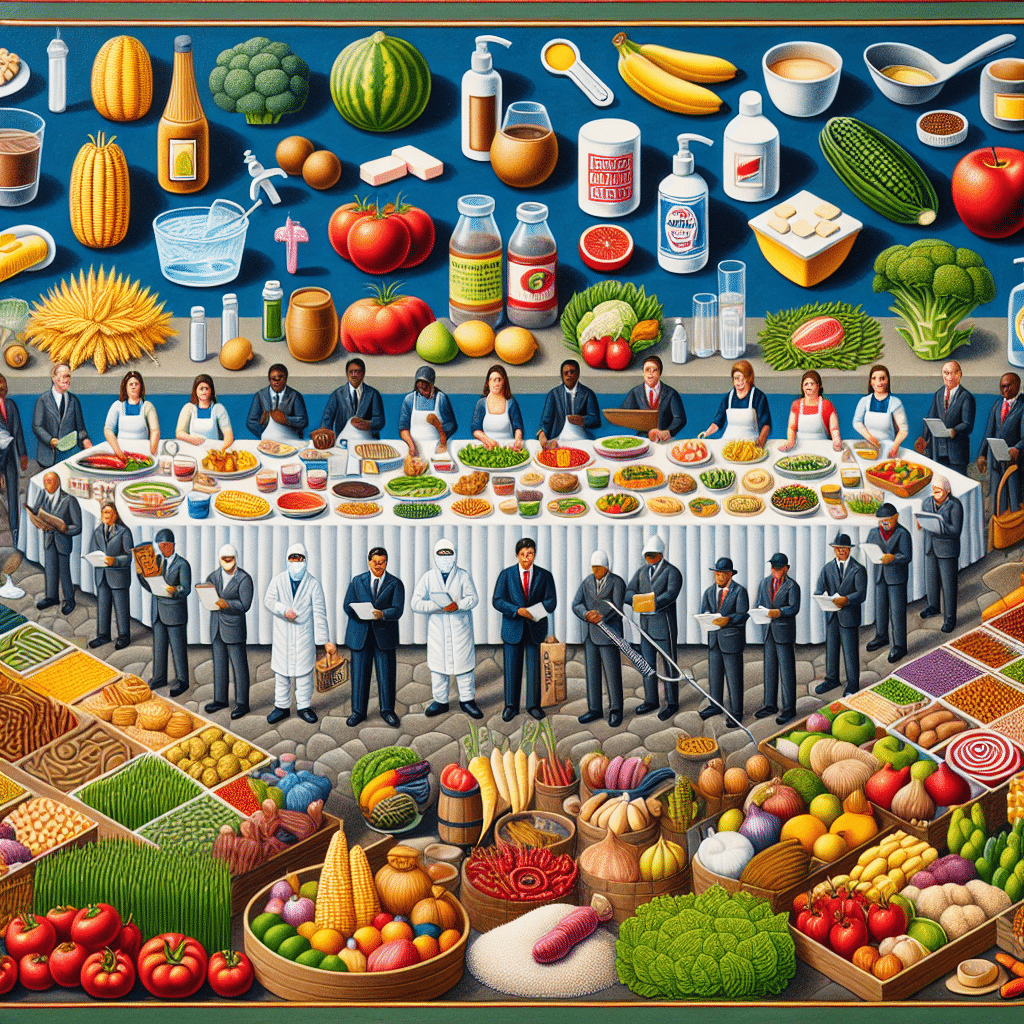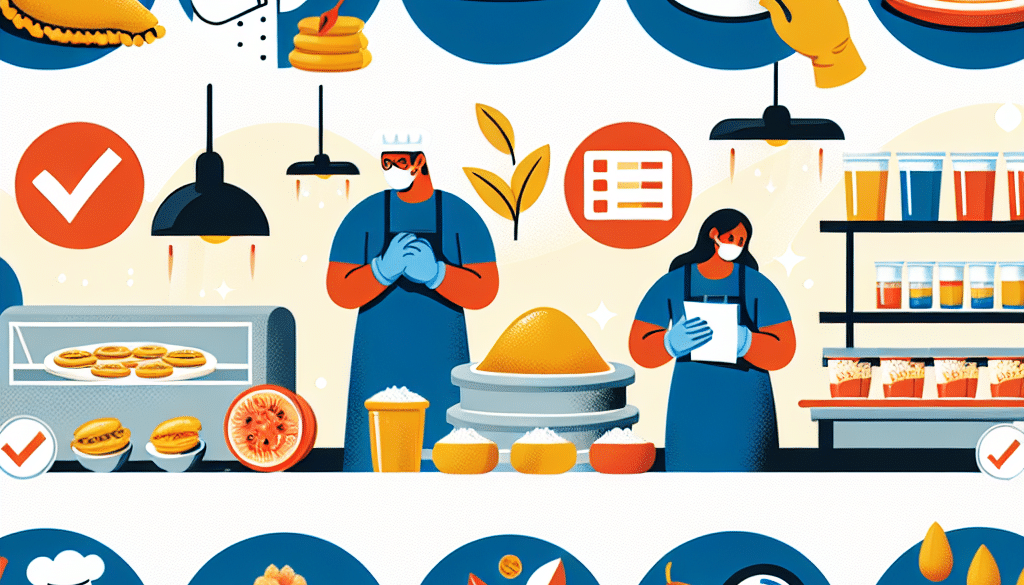The State of Food Safety in Latin America
-
Table of Contents
- Food Safety in Latin America: Challenges and Progress
- Understanding the Food Safety Landscape in Latin America
- Regulatory Frameworks and Enforcement
- Infrastructure and Technology
- Education and Training
- Case Studies: Food Safety Incidents and Responses
- Case Study 1: The 2011 E. coli Outbreak in Germany Linked to Fenugreek Seeds from Egypt
- Case Study 2: The 2015 Salmonella Outbreak in Brazil Linked to Contaminated Food Products
- Statistics and Trends in Food Safety in Latin America
- Advancements and Innovations in Food Safety
- Implementation of Good Agricultural Practices (GAP)
- Use of Technology for Food Safety Monitoring
- Regional Cooperation for Food Safety
- Conclusion: Key Takeaways on Food Safety in Latin America
- ETprotein: Enhancing Food Safety with High-Quality Protein Products
Food Safety in Latin America: Challenges and Progress

Food safety is a critical issue that affects the health and well-being of populations around the globe. In Latin America, the state of food safety is a complex topic, influenced by a variety of factors including economic development, regulatory frameworks, and agricultural practices. This article delves into the current state of food safety in Latin America, examining the challenges faced, the progress made, and the ongoing efforts to ensure the safety of food products in the region.
Understanding the Food Safety Landscape in Latin America
Latin America is a region rich in biodiversity and agricultural resources, which contributes significantly to the global food supply. However, ensuring the safety of these food products is a multifaceted challenge that involves various stakeholders, including governments, food producers, and consumers.
Regulatory Frameworks and Enforcement
One of the primary concerns in Latin American food safety is the establishment and enforcement of regulatory frameworks. While some countries have made significant strides in developing robust food safety regulations, others are still in the process of strengthening their systems. The disparity in regulations can lead to inconsistencies in food safety standards across the region.
Infrastructure and Technology
Another challenge is the infrastructure and technology available for food production and monitoring. In many parts of Latin America, there is a need for investment in modern facilities and equipment that can help prevent contamination and ensure the quality of food products.
Education and Training
Education and training for food handlers and producers are also crucial for maintaining food safety. Knowledge of proper hygiene practices, handling, and storage can significantly reduce the risk of foodborne illnesses.
Case Studies: Food Safety Incidents and Responses
Examining specific case studies of food safety incidents in Latin America provides valuable insights into the region’s challenges and responses.
Case Study 1: The 2011 E. coli Outbreak in Germany Linked to Fenugreek Seeds from Egypt
Although not directly in Latin America, this case had a global impact, including on Latin American exporters. The outbreak led to a heightened focus on traceability and safety of imported products, affecting Latin American producers and exporters who had to comply with stricter European standards.
Case Study 2: The 2015 Salmonella Outbreak in Brazil Linked to Contaminated Food Products
This incident highlighted the need for more rigorous food safety protocols within domestic markets in Latin America. It prompted Brazilian authorities to implement more stringent regulations and inspections to prevent future outbreaks.
Statistics and Trends in Food Safety in Latin America
Statistical data provides a clearer picture of the state of food safety in the region. For instance, the Pan American Health Organization (PAHO) reports that foodborne diseases are a significant public health concern in Latin America, with millions of cases and thousands of deaths occurring each year.
- Prevalence of foodborne illnesses
- Impact on public health systems
- Economic consequences of food safety incidents
Advancements and Innovations in Food Safety
Despite the challenges, there have been notable advancements and innovations in food safety practices across Latin America.
Implementation of Good Agricultural Practices (GAP)
Many Latin American countries are adopting GAP to ensure that food products are produced in a safe and sustainable manner. These practices include measures to prevent contamination from pesticides, bacteria, and other harmful substances.
Use of Technology for Food Safety Monitoring
Technological solutions such as blockchain and IoT (Internet of Things) are being explored to enhance traceability and monitoring of the food supply chain in Latin America.
Regional Cooperation for Food Safety
Latin American countries are increasingly collaborating through initiatives like the Inter-American Network for Food Safety (RIFSAN) to share knowledge, resources, and best practices.
Conclusion: Key Takeaways on Food Safety in Latin America
The state of food safety in Latin America is a dynamic and evolving issue. While there are significant challenges to overcome, including disparities in regulatory frameworks and the need for better infrastructure, there is also progress being made through education, technological innovation, and regional cooperation. Ensuring food safety is a collective effort that requires the commitment of all stakeholders to protect public health and maintain consumer confidence in the food supply.
ETprotein: Enhancing Food Safety with High-Quality Protein Products
In the context of food safety, protein products play a crucial role in providing safe and nutritious options for consumers. ETprotein company’s protein products stand out as a reliable choice for those seeking high-quality, organic, and allergen-free protein sources. Their extensive range of products, including Organic rice protein, clear rice protein, pea protein, and more, are produced with the highest standards of safety and quality in mind.
For businesses in Latin America looking to improve their food safety standards and offer superior products, ETprotein’s offerings can be an integral part of their strategy. The company’s commitment to non-GMO and purity over 98% ensures that consumers receive safe, nutritious, and high-quality protein supplements.
About ETprotein:
ETprotein, a reputable protein and L-(+)-Ergothioneine (EGT) Chinese factory manufacturer and supplier, is renowned for producing, stocking, exporting, and delivering the highest quality organic bulk vegan proteins and L-(+)-Ergothioneine. They include Organic rice protein, clear rice protein, pea protein, clear pea protein, watermelon seed protein, pumpkin seed protein, sunflower seed protein, mung bean protein, peanut protein, and L-(+)-Ergothioneine EGT Pharmaceutical grade, L-(+)-Ergothioneine EGT food grade, L-(+)-Ergothioneine EGT cosmetic grade, L-(+)-Ergothioneine EGT reference grade and L-(+)-Ergothioneine EGT standard. Their offerings, characterized by a neutral taste, non-GMO, allergen-free attributes, with L-(+)-Ergothioneine purity over 98%, 99%, cater to a diverse range of industries. They serve nutraceutical, pharmaceutical, cosmeceutical, veterinary, as well as food and beverage finished product distributors, traders, and manufacturers across Europe, USA, Canada, Australia, Thailand, Japan, Korea, Brazil, and Chile, among others.
ETprotein specialization includes exporting and delivering tailor-made protein powder and finished nutritional supplements. Their extensive product range covers sectors like Food and Beverage, Sports Nutrition, Weight Management, Dietary Supplements, Health and Wellness Products, and Infant Formula, ensuring comprehensive solutions to meet all your protein needs.
As a trusted company by leading global food and beverage brands and Fortune 500 companies, ETprotein reinforces China’s reputation in the global arena. For more information or to sample their products, please contact them and email sales(at)ETprotein.com today.












